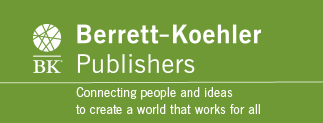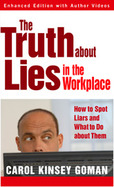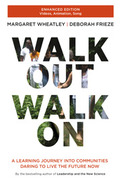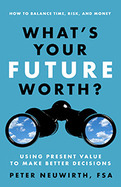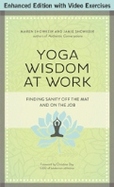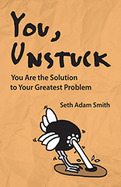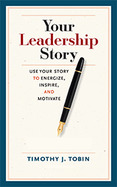Search Results: ""
Results 739-744 of 1358
The Enhanced Edition includes 22 minutes of instructional video by the author in seven videos. The introduction video uses a card trick to show why some liars are harder to spot than others. Three videos explain the key points to know to avoid seeming deceptive when telling the truth, how biases and assumptions interfere with the ability to know who’s lying, and how managers can reduce lies in the workplace. Two videos show examples of nonverbal deception detection, and how to deal with liars in a job interview. One video shares what the author has learned since writing the book.
Lying can cause irreparable financial, psychological, and emotional damage in an organization, yet liars also know that we're terrible at recognizing their deceit. Goman's book is a simple primer to help anyone spot lies before they do harm.The Enhanced Edition includes 22 minutes of instructional video by the author in seven videos. The introduction video uses a card trick to show why some liars are harder to spot than others. Three videos explain the key points to know to avoid seeming deceptive when telling the truth, how biases and assumptions interfere with the ability to know who’s lying, and how managers can reduce lies in the workplace. Two videos show examples of nonverbal deception detection, and how to deal with liars in a job interview. One video shares what the author has learned since writing the book.
Lies aren’t good in general, but in the workplace they’re especially poisonous. They can destroy employee engagement and productivity, undermine teamwork, increase stress, ruin people’s livelihoods, and even bring down entire companies.
It’s critical to catch workplace lies before they snowball into something catastrophic, but most of us have no clue about how to spot a liar. And the workplace setting adds another layer of complexity. At what point do you report a liar? If you decide to take action, what exactly should you do? And what if the liar is your boss?
In this entertaining and needed book, leading workplace body language expert Carol Kinsey Goman combines her own experiences with the latest research to provide a comprehensive guide to spotting, exposing, and minimizing workplace lies. Goman looks at the high cost of workplace deception for individuals and organizations, why people tell lies at work, and the kinds of lies they tell. She offers fifty ways that body language and vocal cues can help you spot a liar and explains how our own vanities, desires, self-deceptions, and rationalizations allow us to be duped.
Once you spot a lie, she provides tactical advice on how to respond, whether the liar is above, below, or on the same level as you. And Goman explains how to make sure your own body language doesn’t inadvertently make you seem untrustworthy and what leaders at all levels can do to reduce lies and encourage candor.
Some workplace lies are a polite and positive part of professional life (“I’d be delighted to come to that meeting”). But Goman focuses on truly destructive lies and shows how you can prevent them from wreaking havoc on individuals and organizations.
Provides an intimate experience of how seven healthy and resilient communities took on intractable problems by working together in new and different ways.
This is an era of increasingly complex problems, fewer and fewer resources to address them, and failing solutions. Is it possible to find viable solutions to the challenges we face today as individuals, communities, and nations? This inspiring book takes readers on a learning journey to seven communities around the world to meet people who have “walked out” of limiting beliefs and assumptions and “walked on” to create healthy and resilient communities. These Walk Outs who Walk On use their ingenuity and caring to figure out how to work with what they have to create what they need. In India, we meet people from Shikshantar, a community that is rejecting the modern culture of money, with its emphasis on self-interest and scarcity, in favor of a gift culture based on generosity and reciprocity. In Zimbabwe, we discover the capacity people have to adapt and invent new ways of surviving and thriving in the face of total systems collapse. Through essays, stories, and beautiful color photographs, Wheatley and Frieze immerse us in these communities that are accomplishing extraordinary things by relying on everyone to be an entrepreneur, a leader, an artist. From Mexico to Greece, from Columbus, Ohio, to Johannesburg, South Africa, we discover that every community has within itself the ingenuity, intelligence, and inventiveness to solve the seemingly insolvable. “It’s almost like we discovered a gift inside ourselves,” one Brazilian said, “something that was already there.” “This book gives insight and beauty to the new world beyond consumerism and all of its side effects. Written with poetic and reflective grace, it is an intimate journey through communities that are creating a future with their own hearts, hands, and relationships.” —Peter Block, author of Community and coauthor of The Abundant Community The Enhanced Edition includes 25 minutes of animation, video, and audio. The animation shows the “Two Loops Theory of Change” with a voiceover from co-author Deborah Frieze. Three videos show inspirational “Walk On” communities in Brazil, South Africa, and India. This edition also includes the “Walk Out Walk On” theme song. Margaret Wheatley cofounded and led the Berkana Institute, a global foundation that partners with people developing healthy and resilient communities. Deborah Frieze succeeded her as Berkana’s president and created the Berkana Exchange with many of the people described in this book. Margaret is the author of several books, including Leadership and the New Science, A Simpler Way, Turning to One Another, Finding Our Way, and Perseverance.
We weigh every significant decision based on how it will affect our future. But when it comes to figuring that out, we mostly make the process up as we go along. While financial professional Peter Neuwirth can't help you actually predict the future, he can offer a simple, systematic way to make much better guesses about it—and so make better decisions.
Neuwirth offers an accessible, step-by-step guide to using the powerful concept of Present Value—which allows you to determine the value today of something that might happen in the future—to evaluate all of the outcomes that might arise from choosing one path as opposed to another. Using examples that anyone can relate to, Neuwirth walks you through the process. Your old refrigerator doesn't work as well as it used to—should you buy a new one right away or muddle through for a while? You're offered a great discount on a service you don't need at the moment but eventually will—buy the service now or wait?
With just a little math and some common sense, you can compare future costs and benefits with present costs and benefits and make “apples to apples” comparisons. This book will be indispensable for anyone who has ever had to figure out whether to stick with an awful job or follow his or her bliss, fix that old car or buy a new one, increase 401(k) contributions or keep the same take-home pay, and a thousand other decisions.
Neuwirth offers an accessible, step-by-step guide to using the powerful concept of Present Value—which allows you to determine the value today of something that might happen in the future—to evaluate all of the outcomes that might arise from choosing one path as opposed to another. Using examples that anyone can relate to, Neuwirth walks you through the process. Your old refrigerator doesn't work as well as it used to—should you buy a new one right away or muddle through for a while? You're offered a great discount on a service you don't need at the moment but eventually will—buy the service now or wait?
With just a little math and some common sense, you can compare future costs and benefits with present costs and benefits and make “apples to apples” comparisons. This book will be indispensable for anyone who has ever had to figure out whether to stick with an awful job or follow his or her bliss, fix that old car or buy a new one, increase 401(k) contributions or keep the same take-home pay, and a thousand other decisions.
Everyone knows that yoga helps reduce stress and increase the body’s flexibility and strength. But the poses are only one part of a larger philosophy offering profound insights for confronting the complexities of daily life. Yoga can help you remain centered, compassionate, positive, and sane every hour of the day—especially those between nine and five.
This unprecedented guide shows how practicing the full range of yogic concepts—the traditional “Eight Limbs of Yoga”—leads to a productive, creative, and energizing work environment and features examples from professions like law enforcement, teaching, banking, filmmaking, medicine, and many more. But beyond that, this book is an invitation to use all of yoga’s teachings to cultivate the spark of the divine that dwells within each of us.
The Enhanced Edition includes six videos (9 minutes) and seven audios (21 minutes). The videos include personal stories about the benefits of practicing yoga at work, a method to help honor non-lying and non-violence, and three breath control techniques. The audios feature meditations to help release negativity, increase energy, calm the mind, tap into one’s own essence, and be fully present at work, as well as specific suggestions for living out the yogic precepts of contentment and surrendering to a higher purpose in the workplace.
You Unstuck
2015
All of us feel trapped, stuck, or unable to move forward in life at some point. What is it that's holding us back? According to Seth Adam Smith, it's who, not what. Ultimately, the greatest obstacle to achieving your full potential is you.
But you are also the solution to your greatest problem.
This book combats a destructive mind-set that we all sometimes fall into: I can't change. I am the victim of my circumstances, and I am confined by my personal limitations. This philosophy, though intangible, destroys more dreams and limits more lives than any actual, physical obstacle. To show us how to overcome this philosophy of fear, Smith draws on literature, history, and his personal experiences with chronic depression, as well as on encounters with remarkable “ordinary” people who've embraced a different philosophy: the belief that we possess the power to lift ourselves out of the abyss and into the light.
Smith inspires us to see that no matter how dire our circumstances may be, there is always a positive step you can take, however small it might be. He doesn't sugarcoat the difficulties or offer promises of overnight success. But he does promise that if you continue to see yourself as a victim you'll remain frozen and fearful. We may not be able to control what happens to us, but we can always control how we react.
But you are also the solution to your greatest problem.
This book combats a destructive mind-set that we all sometimes fall into: I can't change. I am the victim of my circumstances, and I am confined by my personal limitations. This philosophy, though intangible, destroys more dreams and limits more lives than any actual, physical obstacle. To show us how to overcome this philosophy of fear, Smith draws on literature, history, and his personal experiences with chronic depression, as well as on encounters with remarkable “ordinary” people who've embraced a different philosophy: the belief that we possess the power to lift ourselves out of the abyss and into the light.
Smith inspires us to see that no matter how dire our circumstances may be, there is always a positive step you can take, however small it might be. He doesn't sugarcoat the difficulties or offer promises of overnight success. But he does promise that if you continue to see yourself as a victim you'll remain frozen and fearful. We may not be able to control what happens to us, but we can always control how we react.
Stories have power. They move people in a way that facts and figures can't. Many leaders use stories as a tool, but leadership development expert Tim Tobin says most have no idea what tale their own leadership is telling. He shows how, by thinking of your career as a narrative-with a plot, characters, and an arc-you can increase your awareness of yourself as a leader and become more effective, insightful, and inspiring.
Using story as both a metaphor and a process for self-development, Tobin offers activities and questions that help you better understand your own leadership and how others perceive it. What is the plot of your leadership story-your overall goals and purpose? Who are the main characters and what roles do they play? How have the settings of your story influenced it? What are the conflicts that you need to resolve to move toward the ending you intend?
But you have to share your story to make it an effective leadership tool. Tobin gives detailed advice on framing your message, finding ways to communicate it, and understanding the role others play in furthering that message.
If you don't tell your leadership story, other people will-and it may not be the story you want told. Taking control of your leadership story enables you to more consciously shape the impact you have in the world. You'll be better equipped to make decisions, choose actions that tell the story you want to tell, make stronger connections to those you lead, and ensure that you become the kind of leader you want to be.
Using story as both a metaphor and a process for self-development, Tobin offers activities and questions that help you better understand your own leadership and how others perceive it. What is the plot of your leadership story-your overall goals and purpose? Who are the main characters and what roles do they play? How have the settings of your story influenced it? What are the conflicts that you need to resolve to move toward the ending you intend?
But you have to share your story to make it an effective leadership tool. Tobin gives detailed advice on framing your message, finding ways to communicate it, and understanding the role others play in furthering that message.
If you don't tell your leadership story, other people will-and it may not be the story you want told. Taking control of your leadership story enables you to more consciously shape the impact you have in the world. You'll be better equipped to make decisions, choose actions that tell the story you want to tell, make stronger connections to those you lead, and ensure that you become the kind of leader you want to be.
